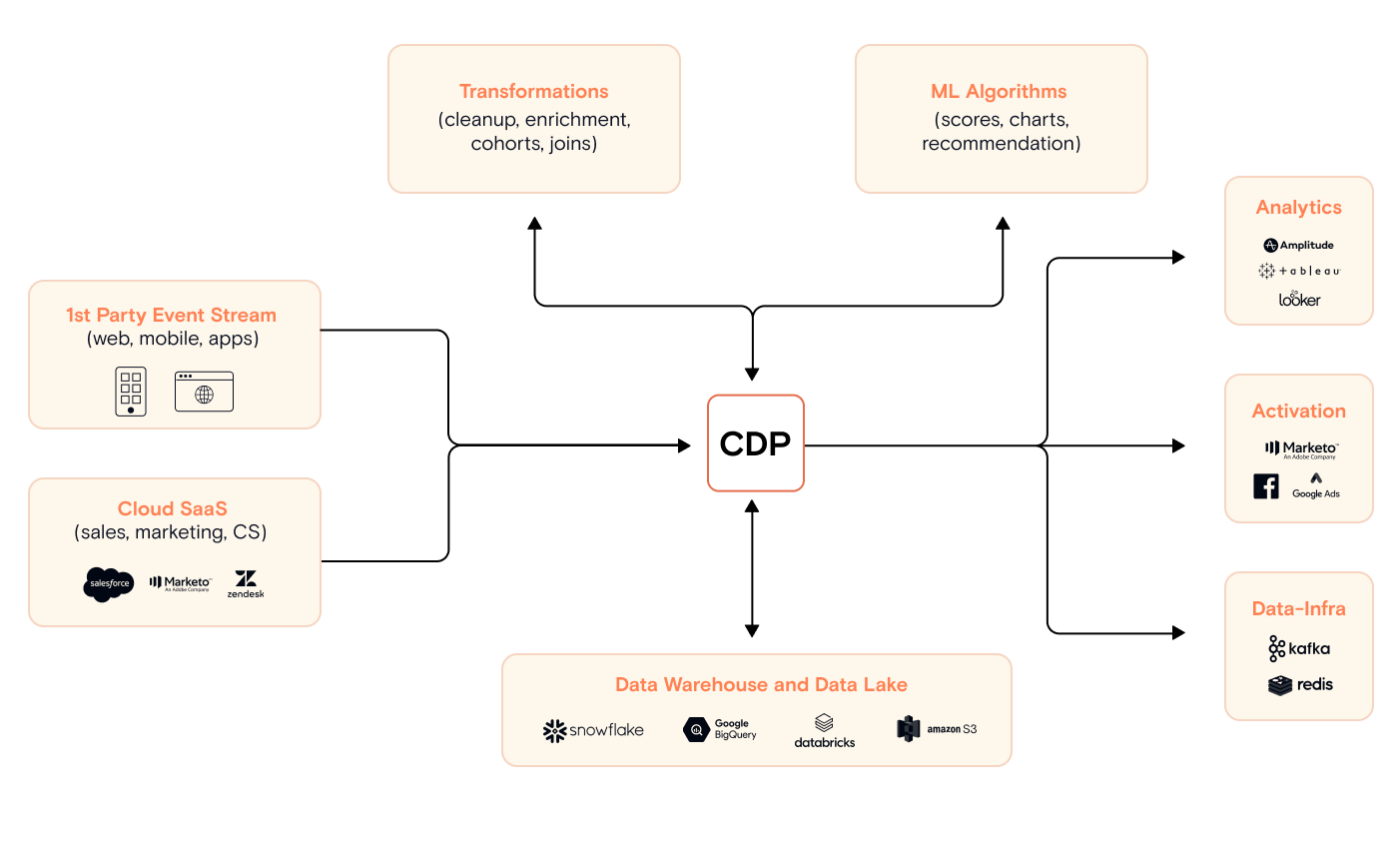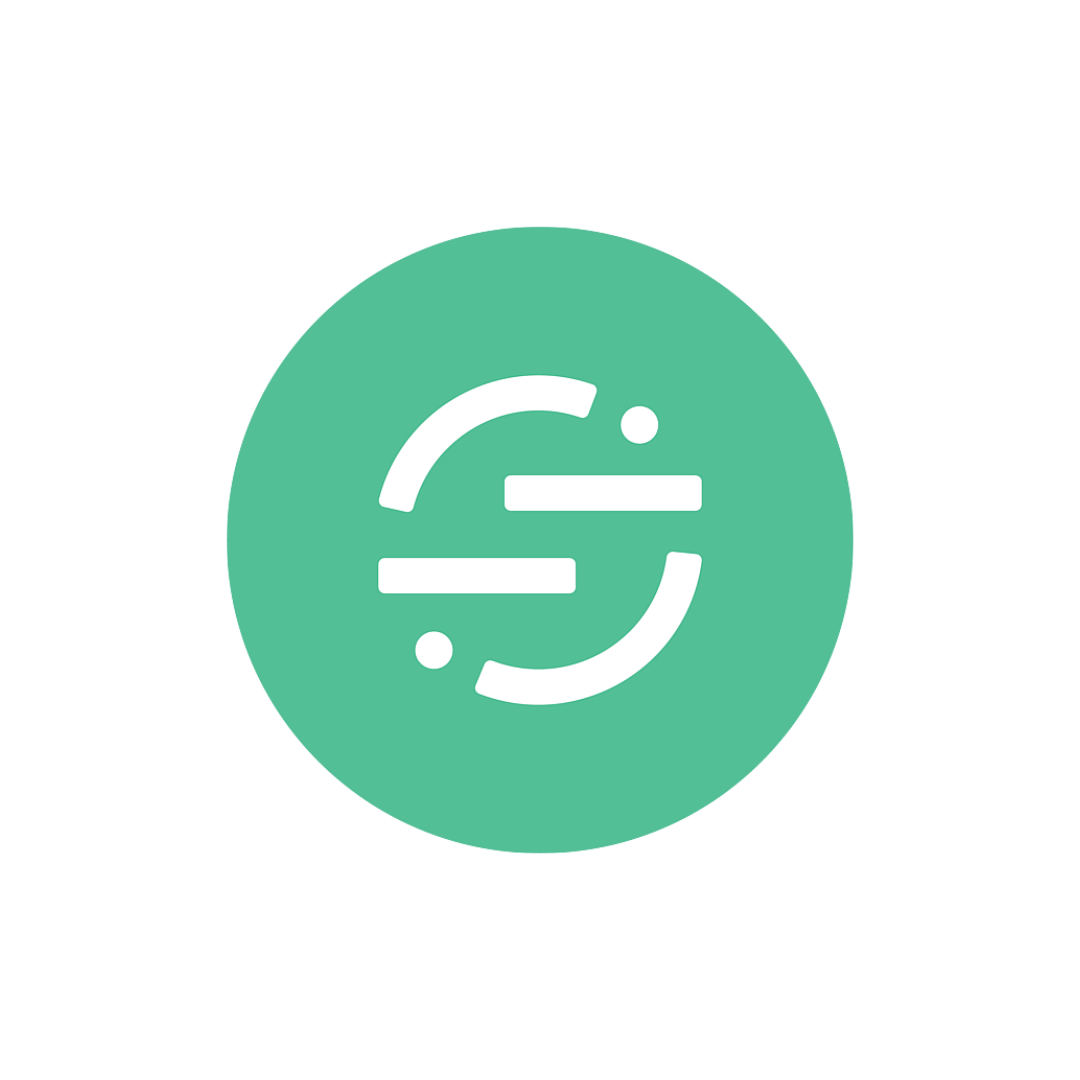Customer Data Platform(CDP)

Customer Data Platforms(CDP) are among the fastest-growing data tools today. CDP tools gather customer data from different sources to create a persistent & unified customer database.
What is a customer data platform (CDP)?
The goal of a customer data platform is to (1) build a unified view of your customers and (2) utilize these profiles to enrich the quality of customer interactions across multiple touch points. With a “build once, use everywhere” mentality, organizations can use a CDP to make sure their customer interactions are personalized, consistent across touch points, and valuable for all parties involved.
What does a customer data platform do?
Customers interact with an organization through marketing, sales, support, and the product itself. CDPs help collects and aggregate this information, build customer profiles, and propagate this information to downstream systems. Operational systems take advantage of these profiles to deliver personalized messaging, contextualized interactions, and custom experiences. To achieve this, there are several major things a CDP does:
- Bring in the data. Customer Data Platforms have integrations with a variety of first-party data sources that capture customer information in relation to an organization. This includes marketing, sales, support, and the product itself.
- Build the profiles. Customer Data Platforms build unified customer profiles (oftentimes called “Customer 360”) that are a combination of static traits as well as aggregate behavior information.
- Make the profiles useful. Once the profiles are built, they are utilized by internal apps, sales/marketing/support vendors, and other systems to take advantage of the data to personalize communications or contextualize interactions.

Bringing in the Data
Since customer interactions are captured in a variety of tools and software, there are many.
This includes information such as data used within the product, metadata (e.g. geography), and behavioral data (product usage, marketing responsiveness, sales/support communications). This data is often referred to as “first party data” because it is the customer’s interaction with the organization itself rather than information bought from outside parties.
There are several ways of bringing in data, many of which are understood in the context of the modern data stack. These are the most common examples.
- Application Event Tracking. Organizations can leverage SDKs across a variety of languages that enable them to track and understand user behavior and flows throughout a software application. This can be done either on the client (Mobile, Web, Smart Device) or on the server (Python, Java, Go, etc.) with trade-offs for each.
- Vendor Webhooks. Some software vendors expose webhooks to activity that happens on their platform. These data streams are private to the organization using the vendor and provide information on how the vendors are used.
- Production Databases. Production databases are a good source of truth for application transactions or production data models. These data streams are often brought in via ELT/ETL (extract, transform, load) processes that leverage modern techniques like change data capture (CDC).
- Vendor Data Extracts. Vendors that directly engage with customers on behalf of an organization often hold the data within their systems. This data can be extracted in batch through vendor-provided APIs.
Building the Profiles
Bringing in customer data enables you to build unified, comprehensive customer profiles based on every touchpoint with your organization. Given the data that is collected through upstream integrations, a customer data platform builds a single view of the user that can be understood, filtered, aggregated, or propagated, depending on the use case.
Advanced features in building customer profiles include:
- Personalization. Machine learning models or simple heuristics can help predict what customers are interested in based on existing interaction. This includes personalized recommendations, personalized messaging, or cohort-specific customer journeys.
- Customer Health. Customer health is based on a combination of engagement (or lack thereof), quality of interaction, direct feedback, and more. This information can help guide messaging that is encouraging, conciliatory, determined or exploratory depending on how the customer feels about the company/product.
- Identity resolution. Customer interactions across many tools often share an identifier, but pseudo-anonymous interactions (e.g. pre-login) benefit from being stitched back together to customers once you determine who they were.
Making the Profiles Useful
Activating data on a customer data platform involves making it available to downstream communication platforms, whether it be sales, marketing, support, or the product itself. These are often the same tools used to capture these interactions from the “Bring in the Data” section above.
This can involve either pushing the downstream systems, or exposing an interface (e.g. API endpoint) that enables vendors to access and aggregate customer data. If the data lives in a cloud data warehouse, there may be technological overlap with products in the Reverse ETL category, which help push data from warehouses to downstream integrations.
In addition to using data for individual customers, CDPs enable organizations to build audiences lists or properties based on features of audiences. For example, if you want to target all customers from Europe who joined in the past 5 days, a CDP would enable you to leverage the central customer profile to build audience lists that can be used in communication platforms.
What should you look for when evaluating a CDP solution?
The best customer data platform for you depends on a number of factors you may value for your business. Data storage, privacy, control, cost, completeness, extensibility, and more. Here are a few considerations that should inform your CDP evaluation:
- How complete is the data coming in? With the new wave of privacy-conscious browser restrictions designed to improve user privacy and to weaken the marketplace of data brokers, first party event collection systems are often affected even though they are not the intended target. Effective CDPs have a number of approaches to tackling external challenges and verifying data quality.
- How good is the data coming in? Do you need tight controls over the data quality of the data coming in from your application, your vendors, and your databases? Some CDPs support a concept of Tracking Plans to verify that data coming in has a consistent format that can be used to accurately update a user profile.
- How much control do you have over your data? When working with a customer data platform, do you need to interact with the data directly or are you ok working with the data through interfaces provided by the CDP? If a CDP shares its data with you or lives on a cloud data warehouse, then you have more visibility into your data and can re-use your customer data profiles for custom processing and analytics.
- What channels do you use to communicate with customers? B2B organizations have high value investments in a smaller number of customers through sales processes, while B2C (such as ecommerce or marketplaces) organizations traditionally invest more in digital marketing and advertisements. Different CDPs have product optimizations or cost models that may be more advantageous for one or the other.
- How comprehensive is your data privacy program? Data privacy laws such as GDPR and CCPA put stricter controls on collection, access, storage, and facilitation of customer data. A CDP should be able to provide compliance for both data within it’s system as well as forward deletion requests to downstream systems. In addition to this, some CDPs may go one step further with compliance for medical data (HIPAA).
Ultimately, the customer data platform is an evolving concept that brings together multiple elements of the modern data stack into a very clear set of goals that enable organizations to make the most out of first-party customer data.
Featured Companies
Here are some amazing companies in the Customer Data Platform(CDP).
mParticle is the customer data platform (#CDP) for brands leading the ...



